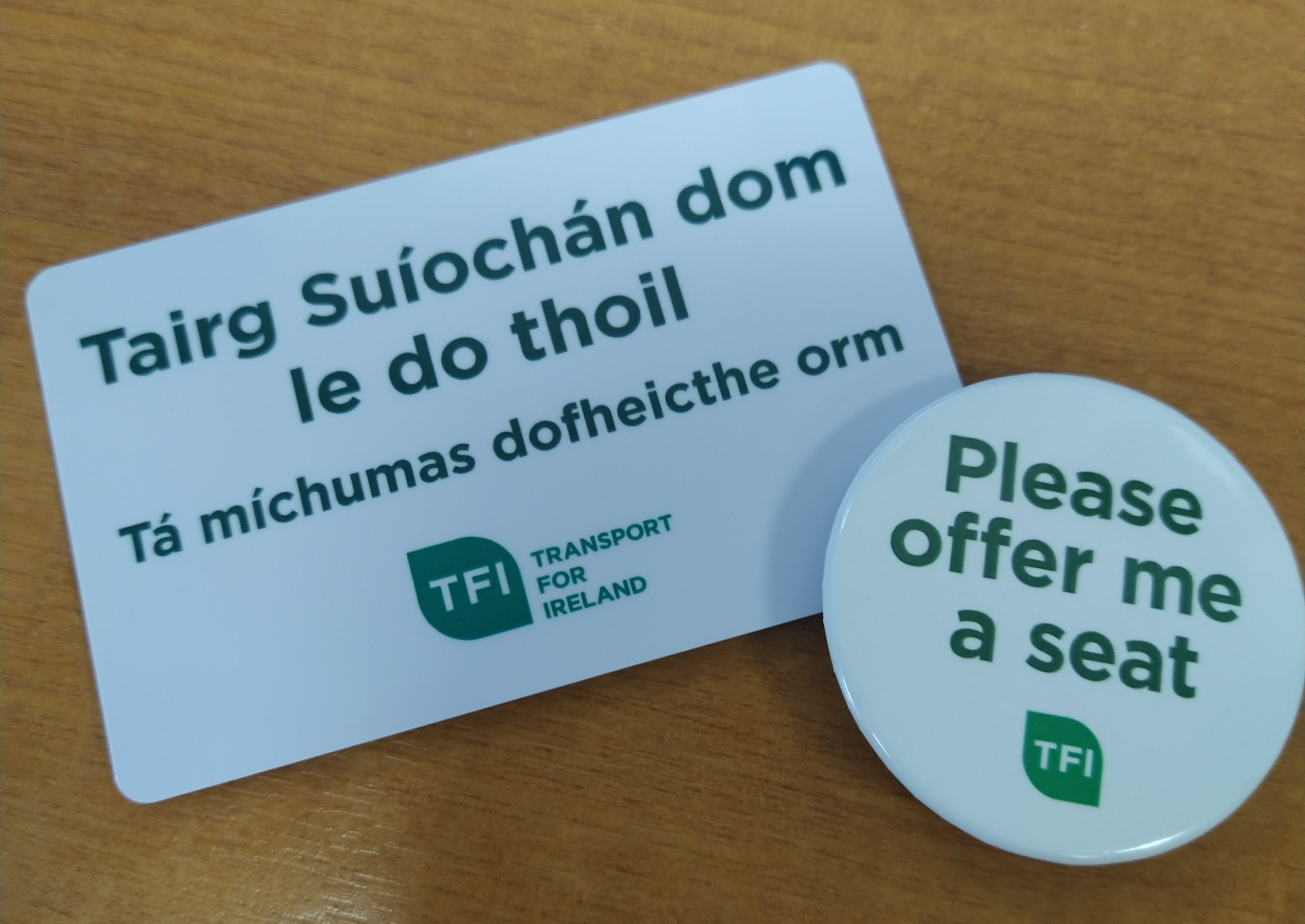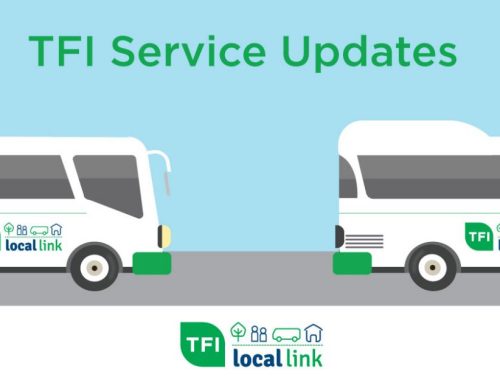Transport for Ireland (TFI), along with Invisible Disability Ireland, is today launching the “Please Offer Me a Seat” Badge and Card for people with invisible disabilities to use when using public transport.
If a passenger with an invisible disability has difficulty standing while using public transport, the badge or card will help them to subtly alert fellow passengers that they would welcome being offered a seat. Some examples of invisible disabilities are fibromyalgia, autism, head injuries, chronic pain, poor balance and multiple sclerosis, along with other conditions.
The badge and card can be used on Dublin Bus, Bus Éireann, Iarnród Éireann—Irish Rail, Luas, Go-Ahead Ireland, and TFI Local Link services.
Dominic Hannigan, Public Transport Regulation at the NTA said, “It is important that public transport is as inclusive and accessible for people of varying abilities as possible. Public transport is for everyone and any measure that assists our passengers in feeling as comfortable as possible while using our services is welcome. I encourage passengers with hidden disabilities to contact their local public transport operator to obtain a card or badge and I hope other passengers will be understanding of those who indicate that they would appreciate being offered a seat”.
Emily Larkin, Founder and Director of Invisible Disability Ireland said, “One in 7 people in Ireland have a disability and about 80%of disabilities have invisible impairments, meaning they are not immediately apparent. Invisible disabilities are no less challenging and can hinder a person’s efforts to go to school, work, socialise, and more. Although people with invisible disabilities make up a large percentage of the disability population, they have little representation, awareness, understanding or support. Not only will the “Please Offer Me a Seat” Badge and Card ensure that people with hidden disabilities are eligible for a seat in priority areas on public transport, I also hope that this will help raise awareness and promote a greater understanding of invisible disabilities amongst the general public”.




